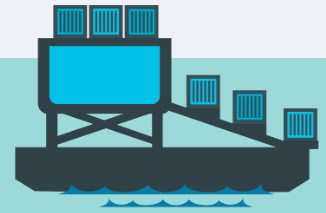Kubernetes Momentum Builds With New AWS Tools

Amazon Web Services has rolled out new application container tools designed to run containers without having to manage infrastructure along with a managed Kubernetes container orchestration capability. Both run on the Amazon Elastic Container Service.
The cloud giant unveiled the upgraded container capabilities during this week's AWS:reinvent gathering in Las Vegas. The introductions underscore the growing momentum of the Google-backed Kubernetes container orchestrator.
AWS Fargate is billed as allowing customers to launch and run containers without provisioning or managing servers or clusters. That, the company claims, gives application developers more freedom to try out new services independent of DevOps teams. The result is lower operation costs to accelerate deployment of distributed applications, AWS (NASDAQ:AMZN) said Wednesday (Nov. 29).
Fargate is said to automate steps such as selecting and instance types, when to scale clusters and how to optimize cluster utilization. Instead, users need only to define applications at the "task" level, a utility that includes parameters such as CPU and memory requirements along with a list of containers.
Tasks can be launched in seconds, and users "pay only for resources in the Task—not for the infrastructure Tasks run on," the company said.
AWS Fargate is available now on Amazon Elastic Compute Cloud and will be rolled out on the new Elastic Container Service for Kubernetes in 2018.
AWS claims to have more customers running Kubernetes clusters than any other public cloud. The Cloud Native Computing Foundation (CNCF) estimates that 63 percent of Kubernetes clusters are hosted on its Elastic Compute Cloud. AWS joined the foundation last summer.
The new managed container orchestration service responds to customer demand for a managed Kubernetes service similar to the one running on its Elastic Container Service, noted Deepak Singh, general manager of containers and high performance computing services at AWS.
The automated container service is designed to handle much of the manual work currently required to operate Kubernetes, including steps like managing clusters of servers across multiple "availability zones." Management of server clusters is then distributed across multiple zones to reduce single points of failure, the company explained. (AWS currently operates 44 availability zones across 16 regions.)
The public cloud giant's release of Kubernetes management tools helps sustain the growing momentum of the container orchestrator developed and released by Google (NASDAQ: GOOGL). As of March 2017, CNCF found that 77 percent of users survey said Kubernetes was their preferred container management platform, well ahead of computing platforms such as Docker Swarm, Apaches Mesos and OpenStack.
"Containers are being used across a variety of development stages, with a vast majority of companies continuing to increase their use of Kubernetes for development and testing where we’ve seen huge growth over the last year," the industry group noted in a blog post.
Related
George Leopold has written about science and technology for more than 30 years, focusing on electronics and aerospace technology. He previously served as executive editor of Electronic Engineering Times. Leopold is the author of "Calculated Risk: The Supersonic Life and Times of Gus Grissom" (Purdue University Press, 2016).











